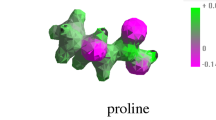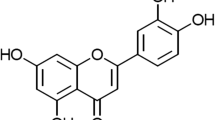Abstract
Low-transition temperature mixtures (LTTMs), also known as deep eutectic solvents, are liquid mixtures of natural substances that possess unique properties, not encountered with conventional solvents. Such liquids represent a state-of-the-art means of extracting bioactive plant constituents, yet the plethora of combinations of various substances that form LTTMs dictates detailed comparative testing, to identify LTTMs with high extraction capacity. In this study, a number of combinations of hydrogen bond donors (HBDs) with sodium acetate serving as the hydrogen bond acceptor (HBA), was attempted. The stable LTTMs formed were then used to extract antioxidant polyphenols and pigments from red grape pomace (RGP). The LTTM composed of L-lactic acid and sodium acetate at a molar ratio of 5:1 was found to be the most efficient solvent, giving a total polyphenol yield of 134.54 mg gallic acid equivalents per g of dry weight and a total pigment yield of 3.32 mg malvin equivalents per g of dry weight. The extract obtained with this particular LTTM also possessed the strongest antioxidant activity. The principal compounds in this extract were tentatively identified as phenolic acids, anthocyanin pigment derivatives and a flavonol glycoside.





Similar content being viewed by others
Abbreviations
- AAR :
-
antiradical activity (μmol DPPH g−1)
- C TFn :
-
total flavonoid concentration (mg RtE L−1)
- PR :
-
reducing power (μmol AAE g−1)
- RL/S :
-
liquid-to-solid ratio (mL g−1)
- Rt :
-
retention time (min)
- YTFn :
-
yield in total flavonoids (mg RtE g−1)
- YTPm :
-
yield in total pigments (mg MvE g−1)
- YTP :
-
yield in total polyphenols (mg GAE g−1)
- AAE:
-
ascorbic acid equivalents
- BD:
-
2,3-butanediol
- DPPH:
-
2,2-diphenyl-picrylhydrazyl radical
- dw:
-
dry weight
- GAE:
-
gallic acid equivalents
- GL:
-
glycerol
- HBA:
-
hydrogen bond acceptor
- HBD:
-
hydrogen bond donor
- LA:
-
L-lactic acid
- LTTM:
-
low-transition temperature mixture
- MvE:
-
malvin (malvidin 3-O-glucoside) equivalents
- OA:
-
oxalic acid
- RGP:
-
red grape pomace
- RtE:
-
rutin (quercetin 3-O-rutinoside) equivalents
- SA:
-
sodium acetate
- TPTZ:
-
2,4,6-tripyridyl-s-triazine
References
Bakirtzi C, Triantafyllidou K, Makris DP (2016) Novel lactic acid-based natural deep eutectic solvents: efficiency in the ultrasound-assisted extraction of antioxidant polyphenols from common native Greek medicinal plants. J Applied Res Med Arom Plants 3:120–127
Barba FJ, Zhu Z, Koubaa M, Sant’Ana AS, Orlien V (2016) Green alternative methods for the extraction of antioxidant bioactive compounds from winery wastes and by-products: a review. Trends Food Sci Technol 49:96–109
Bergez-Lacoste M, Thiebaud-Roux S, De Caro P, Fabre JF, Gerbaud V, Mouloungui Z (2014) From chemical platform molecules to new biosolvents: design engineering as a substitution methodology. Biofuels Bioprod Biorefin 8(3):438–451
Corrales M, Toepfl S, Butz P, Knorr D, Tauscher B (2008) Extraction of anthocyanins from grape by-products assisted by ultrasonics, high hydrostatic pressure or pulsed electric fields: a comparison. Innovative Food Sci Emerg Technol 9(1):85–91
Dai Y, van Spronsen J, Witkamp G-J, Verpoorte R, Choi YH (2013) Natural deep eutectic solvents as new potential media for green technology. Anal Chim Acta 766:61–68
Dai Y, Witkamp G-J, Verpoorte R, Choi YH (2015) Tailoring properties of natural deep eutectic solvents with water to facilitate their applications. Food Chem 187:14–19
Espino M, de los Ángeles Fernández M, Gomez FJ, Silva MF (2016) Natural designer solvents for greening analytical chemistry. TrAC Trends Anal Chem 76:126–136
Flamini R (2013) Recent applications of mass spectrometry in the study of grape and wine polyphenols. ISRN Spectroscopy 2013:1–45. doi:10.1155/2013/813563
Francisco M, van den Bruinhorst A, Kroon MC (2013) Low-transition-temperature mixtures (LTTMs): a new generation of designer solvents. Angew Chem Int Ed 52(11):3074–3085
Georgiev V, Ananga A, Tsolova V (2014) Recent advances and uses of grape flavonoids as nutraceuticals. Nutrients 6(1):391–415
Karagiorgou I, Grigorakis S, Lalas S, Makris DP (2016) Polyphenolic burden and in vitro antioxidant properties of Moringa oleifera root extracts. J Herb Med Pharmacol 5(1):33–38
Karakashov B, Grigorakis S, Loupassaki S, Mourtzinos I, Makris DP (2015) Optimisation of organic solvent-free polyphenol extraction from Hypericum triquetrifolium Turra using box–Behnken experimental design and kinetics. Inter J Ind Chem 6(2):85–92
Karvela E, Makris DP, Karathanos VT (2012) Implementation of response surface methodology to assess the antiradical behaviour in mixtures of ascorbic acid and α-tocopherol with grape (Vitis vinifera) stem extracts. Food Chem 132(1):351–359
Katsampa P, Valsamedou E, Grigorakis S, Makris DP (2015) A green ultrasound-assisted extraction process for the recovery of antioxidant polyphenols and pigments from onion solid wastes using box–Behnken experimental design and kinetics. Ind Crop Prod 77:535–543
Makris DP, Boskou G, Chiou A, Andrikopoulos NK (2008) An investigation on factors affecting recovery of antioxidant phenolics and anthocyanins from red grape (Vitis vinifera L.) pomace employing water/ethanol-based solutions. Am J Food Technol 3(3):164–173
Makris DP (2016) Kinetics of ultrasound-assisted flavonoid extraction from agri-food solid wastes using water/glycerol mixtures. Resources, 5, 7. doi:10.3390/resources5010007
Makris DP, Passalidi V, Kallithraka S, Mourtzinos I (2016) Optimization of polyphenol extraction from red grape pomace using aqueous glycerol/tartaric acid mixtures and response surface methodology. Prep Biochem Biotech 46(2):176–182
Manousaki A, Jancheva M, Grigorakis S, Makris DP (2016) Extraction of antioxidant phenolics from Agri-food waste biomass using a newly designed glycerol-based natural low-transition temperature mixture: a comparison with conventional eco-friendly solvents. Recycling 1(1):194–204
Melo PS, Massarioli AP, Denny C, dos Santos LF, Franchin M, Pereira GE, de Souza Vieira TMF, Rosalen PL, de Alencar SM (2015) Winery by-products: extraction optimization, phenolic composition and cytotoxic evaluation to act as a new source of scavenging of reactive oxygen species. Food Chem 181:160–169
Monrad JK, Howard LR, King JW, Srinivas K, Mauromoustakos A (2010) Subcritical solvent extraction of anthocyanins from dried red grape pomace. J Agric Food Chem 58(5):2862–2868
Mouratoglou E, Malliou V, Makris DP (2016) Novel glycerol-based natural eutectic mixtures and their efficiency in the ultrasound-assisted extraction of antioxidant polyphenols from Agri-food waste biomass. Waste Biomass Valor 7(6):1377–1387
Paiva A, Craveiro R, Aroso I, Martins M, Reis RL, Duarte ARC (2014) Natural deep eutectic solvents–solvents for the twenty-first century. Sustain Chem Eng 2(5):1063–1071
Philippi K, Tsamandouras N, Grigorakis S, Makris DP (2016) Ultrasound-assisted green extraction of eggplant peel (Solanum melongena) polyphenols using aqueous mixtures of glycerol and ethanol: optimisation and kinetics. Environ Process 3(2):369–386
Rajha HN, Ziegler W, Louka N, Hobaika Z, Vorobiev E, Boechzelt HG, Maroun RG (2014) Effect of the drying process on the intensification of phenolic compounds recovery from grape pomace using accelerated solvent extraction. Int J Mol Sci 15(10):18640–18658
Teixeira A, Baenas N, Dominguez-Perles R, Barros A, Rosa E, Moreno DA, Garcia-Viguera C (2014) Natural bioactive compounds from winery by-products as health promoters: a review. Int J Mol Sci 15(9):15638–15678
Trasanidou D, Apostolakis A, Makris DP (2016) Development of a green process for the preparation of antioxidant and pigment-enriched extracts from winery solid wastes using response surface methodology and kinetics. Chem Eng Commun 203:1317–1325
Tzima K, Kallithraka S, Kotseridis G, Makris DP (2014) Kinetic modelling for flavonoid recovery from red grape (Vitis vinifera) pomace with aqueous lactic acid. Processes 2:901–911
Zacharof M-P (2016) Grape winery waste as feedstock for bioconversions: applying the biorefinery concept. Waste Biomass Valor. doi:10.1007/s12649-016-9674-2
Zorpas A, Lasaridi K, Voukkali I, Loizia P, Chroni C (2015) Promoting sustainable waste prevention strategy activities and planning in relation to the waste framework directive in insular communities. Environ Process 2(1):159–173
Author information
Authors and Affiliations
Corresponding author
Rights and permissions
About this article
Cite this article
Patsea, M., Stefou, I., Grigorakis, S. et al. Screening of Natural Sodium Acetate-Based Low-Transition Temperature Mixtures (LTTMs) for Enhanced Extraction of Antioxidants and Pigments from Red Vinification Solid Wastes. Environ. Process. 4, 123–135 (2017). https://doi.org/10.1007/s40710-016-0205-8
Received:
Accepted:
Published:
Issue Date:
DOI: https://doi.org/10.1007/s40710-016-0205-8




